Co2 Global
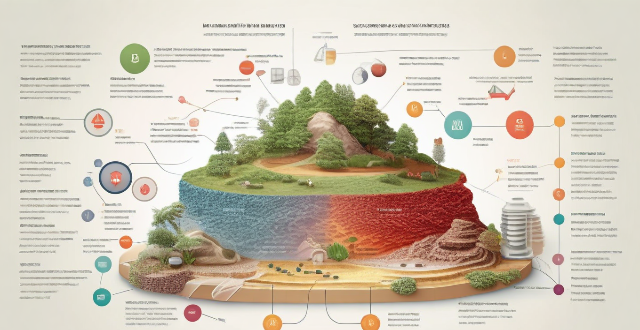
How long will it take for carbon sequestration to have a noticeable effect on atmospheric CO2 levels ?
Carbon sequestration is a process that aims to reduce atmospheric CO2 levels by capturing and storing carbon dioxide. The effectiveness of this process depends on various factors such as the rate of carbon sequestration, global emissions reduction efforts, and the health of natural carbon sinks. In the short term, it is unlikely that carbon sequestration alone will have a noticeable effect on atmospheric CO2 levels. However, in the medium to long term, if significant investments are made in scaling up carbon sequestration technologies and reducing global CO2 emissions, some noticeable effects may begin to emerge. These could include slower rates of CO2 accumulation, improved air quality, reduced global warming, and restoration of natural ecosystems. Therefore, sustained investments in carbon sequestration and other climate mitigation strategies can help achieve long-term reductions in atmospheric CO2 levels and mitigate the effects of climate change.
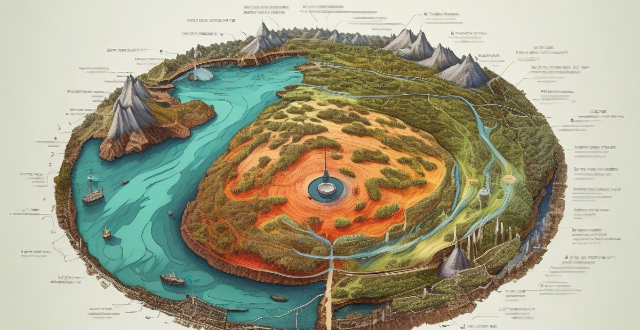
How do climate data analysis contribute to understanding global warming ?
Climate data analysis is essential for understanding global warming, its causes, effects, and potential solutions. Scientists collect temperature records, carbon dioxide concentrations, and sea level data to identify trends, establish correlations, and create predictive models. These efforts help develop effective strategies to mitigate the impacts of global warming.

What is the cost of implementing carbon sequestration on a global scale ?
The cost of implementing carbon sequestration on a global scale varies depending on the method used, the location, and other factors. The cost per ton of CO2 removed ranges from $10-$600 for different methods such as afforestation, reforestation, direct air capture, and enhanced weathering. The total cost for global implementation ranges from $100 billion to $6 trillion per year. Several factors affect the cost, including technology development, economies of scale, policy support, social acceptance, and environmental impact. While the initial costs may be high, the long-term benefits of mitigating climate change make it a worthwhile investment.

How can carbon capture technology be scaled up to address global climate change ?
The article discusses the challenges and strategies associated with scaling up carbon capture technology (CCT) to mitigate global climate change. The challenges include high costs, technological limitations, infrastructure and logistics issues, and regulatory and legal frameworks. To overcome these challenges, strategies such as policy and economic incentives, technological innovation, infrastructure development, public-private partnerships, and international cooperation are proposed. Scaling up CCT is crucial in reducing atmospheric CO2 levels and combating global climate change.

How do deforestation and forest degradation contribute to global warming ?
Deforestation and forest degradation significantly contribute to global warming by reducing carbon sequestration, increasing greenhouse gas emissions, altering the albedo effect, causing biodiversity loss, impacting the water cycle, triggering feedback loops, and posing mitigation and adaptation challenges. These processes also have economic and social impacts, such as displacement of indigenous peoples. Efforts to reduce deforestation and promote sustainable forest management are crucial in combating global warming.

How does deforestation affect global emission levels and what can be done about it ?
Deforestation significantly contributes to global emission levels, primarily through the release of carbon dioxide (CO2) and other greenhouse gases. When trees are cut down or burned, the carbon they have absorbed from the atmosphere during their lifetime is released back into the air. This process exacerbates climate change by increasing the concentration of atmospheric CO2 and other greenhouse gases, which trap heat in the Earth's atmosphere. To mitigate the effects of deforestation on global emissions, various strategies can be implemented, including reforestation, sustainable forest management, reducing demand for forest products, promoting eco-friendly alternatives, strengthening laws and policies, and raising public awareness about the importance of forests in mitigating climate change. By taking these steps, it is possible to reduce the contribution of deforestation to global emissions and work towards a healthier planet.

What is the relationship between forest health and the global carbon cycle ?
The text discusses the relationship between forest health and the global carbon cycle. It highlights the importance of forests in absorbing carbon dioxide from the atmosphere and storing it in their biomass, which helps to mitigate the effects of climate change. Deforestation, or the clearing of forests for agricultural or urban development purposes, has a significant impact on the global carbon cycle by releasing carbon stored in trees back into the atmosphere as CO2. Healthy forests are more effective at sequestering carbon than degraded or damaged forests. Several strategies can be implemented to maintain the health of forests, including protecting existing forests, restoring degraded forests, promoting sustainable forestry practices, reducing emissions from deforestation and forest degradation, and increasing public awareness.

What is global warming and how does it affect the Earth's climate ?
Global warming is causing rising sea levels, extreme weatherGlobal warming is causing rising sea levels, extreme weatherdiversity, ocean acid ocean acidification, melting permafrost, changes in precipitation patterns, and agricultural impacts. It is a complex issue with far-reaching consequences for our planet's climate. Addressing global warming requires international cooperation and concerted efforts to reduce GHG emissions and transition to renewable energy sources.

What role does global warming play in climate predictions ?
The text discusses the role of global warming in climate predictions, emphasizing its multifaceted impact on various aspects of the Earth's climate system. Key points include increased temperatures leading to melting ice, rising sea levels, and changes in precipitation patterns; intensified extreme weather events like heat waves and hurricanes; ocean acidification harming marine life; alterations in ecosystems affecting animal migration and habitats; agricultural impacts such as changing crop yields and growing seasons; and human health concerns including the spread of diseases and heat-related illnesses. The conclusion stresses the importance of considering these factors in future climate projections and mitigating the effects of global warming through reduced greenhouse gas emissions.

Is geoengineering a viable solution to global warming ?
Geoengineering, also known as climate engineering or earth system management, refers to the intentional manipulation of the global climate on a large scale to counteract the effects of global warming and reduce the risks associated with climate change. While geoengineering has potential benefits such as mitigating climate change, providing faster responses compared to conventional methods, and being relatively inexpensive, it also comes with uncertainties regarding long-term effects, lack of international regulation and governance, and limited scope compared to other mitigation strategies. Therefore, geoengineering should not be seen as a substitute for conventional mitigation strategies but rather complement them. Extensive research and international cooperation are essential before implementing any large-scale geoengineering projects to ensure their safety and effectiveness in addressing climate change challenges.

What role does deforestation play in climate change ?
The Role of Deforestation in Climate Change Deforestation contributes to climate change by reducing the Earth's capacity to absorb CO2 and releasing stored carbon back into the atmosphere. This process exacerbates the greenhouse effect, leading to global warming. Key points include: - Loss of Carbon Sinks: Trees act as natural carbon sinks, capturing and storing CO2. When forests are destroyed, these carbon sinks are lost. - Release of Stored Carbon: Deforestation releases the carbon stored in trees back into the atmosphere, increasing atmospheric CO2 levels. - Biodiversity Loss: Forests are home to a vast array of species. Deforestation leads to habitat destruction and loss of biodiversity. - Soil Erosion and Degradation: Trees help maintain soil quality. Without trees, soil can become degraded, reducing its ability to store carbon. - Albedo Effect: Forests have a darker surface than bare ground, meaning they absorb more sunlight and heat. When forests are replaced with lighter-colored surfaces like grasslands or croplands, the albedo (reflectivity) of the land increases. - Feedback Loops: Deforestation can create feedback loops that exacerbate climate change. For example, as temperatures rise due to increased CO2 levels, it becomes harder for some forests to survive, leading to further deforestation and more CO2 emissions. To combat the role of deforestation in climate change, strategies such as reforestation and afforestation, sustainable forestry practices, protection of intact forests, promotion of agroforestry, and public awareness and education can be employed.
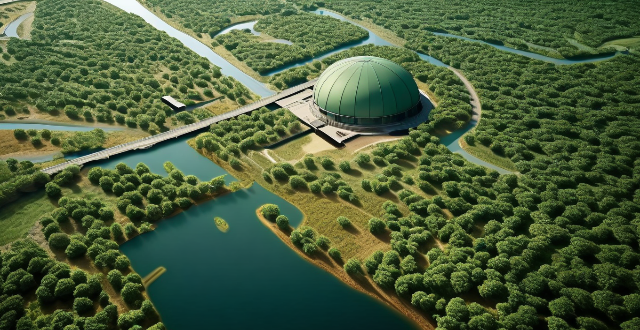
What causes global warming ?
Global warming is primarily caused by the release of greenhouse gases into the Earth's atmosphere, leading to an increase in the planet's average temperature. The main sources of these gases include burning fossil fuels, deforestation, industrial processes, agriculture, transportation, and waste. To mitigate global warming, it is essential to reduce the emissions of these greenhouse gases through various measures such as switching to renewable energy sources, improving energy efficiency, implementing carbon capture and storage technologies, promoting reforestation and sustainable land use practices, encouraging the development and adoption of low-carbon technologies, and supporting policies that reduce emissions.

How much carbon dioxide can be sequestered through different methods ?
The amount of carbon dioxide that can be sequestered varies significantly depending on the method and site conditions. Different methods include geological storage, ocean storage, and terrestrial storage, each with different potentials and technical requirements for CO2 sequestration. Geological storage is one of the most promising methods for long-term storage of CO2. It involves injecting and storing CO2 deep underground, typically in saline formations, depleted oil and gas reservoirs, and unmineable coal seams. The potential for CO2 storage in these geological structures is influenced by various factors such as the size, depth, and permeability of the formations, as well as the existence of impermeable cap rock to contain the CO2. Deep saline formations are porous and permeable rocks filled with saltwater that can store CO2 in various forms such as free gas, dissolved in brine, or mineralized after reacting with the host rock. Depleted oil and gas reservoirs offer another option for CO2 storage. After hydrocarbon extraction, these fields have remaining pore space that can be used to inject and store CO2. Unlike saline formations, they often have pre-existing infrastructure for drilling and injection, which can reduce the cost of storage. Unmineable coal seams, also known as coal bed methane (CBM) reservoirs, can store CO2 through a process called enhanced coal bed methane recovery. In this process, injecting CO2 into coal seams displaces methane, which can be recovered as a energy source while sequestering the CO2. Ocean storage involves dissolving CO2 in seawater at great depths where it remains isolated from the atmosphere. This method relies on either natural processes like ocean upwellings or engineering techniques such as direct injection or pipeline delivery systems. While the exact storage capacity is difficult to estimate due to complex ocean dynamics, studies suggest that the global ocean could theoretically absorb thousands of gigatons of CO2. Terrestrial storage focuses on enhancing the natural processes by which ecosystems capture and store carbon. This includes reforestation, afforestation, and soil management practices that increase carbon stocks in vegetation and soils. The potential for terrestrial storage is significant but varies widely depending on factors like climate, soil type, and land use practices. Globally, it is estimated that forests alone could potentially sequester hundreds of gigatons of CO2 over several decades.

What are some examples of carbon offset projects ?
Carbon offset projects are initiatives designed to reduce or offset the emission of carbon dioxide (CO2) and other greenhouse gases into the atmosphere. These projects aim to mitigate the impacts of climate change by investing in activities that remove CO2 from the atmosphere or prevent its release in the first place. In this guide, we will explore some examples of carbon offset projects and how they contribute to the global effort to combat climate change.

What is carbon capture and how does it work ?
Carbon capture, a technology to reduce CO2 emissions from industrial processes and power generation facilities, comprises three main types: post-combustion, oxy-fuel combustion, and pre-combustion. Each method captures CO2 differently, and the captured gas can be stored or used for other purposes. Carbon capture offers benefits such as reducing greenhouse gas emissions and supporting the transition to a low-carbon economy but faces challenges like high costs and energy requirements.

What are the potential long-term effects of global warming on ecosystems ?
Global warming, caused by greenhouse gases, can have severe impacts on ecosystems worldwide. Potential long-term effects include species extinction, changes in distribution and abundance of species, alteration of ecosystem functions, loss of habitat due to rising sea levels, and invasion of non-native species. These impacts underscore the need for action to mitigate climate change and protect ecosystems.

Can carbon capture help us achieve our climate goals ?
Carbon capture and storage (CCS) has the potential to mitigate climate change by capturing CO2 emissions from power plants and industrial processes, preventing them from entering the atmosphere. The captured CO2 can be transported to a suitable location for long-term storage or used for enhanced oil recovery. However, CCS technology faces challenges such as high costs, energy losses, and public acceptance issues. While it is not a silver bullet, CCS could play a valuable role in reducing greenhouse gas emissions when integrated with renewable energy strategies and energy efficiency measures.

What are the primary causes of global warming ?
The primary causes of global warming include the increase in greenhouse gases, especially carbon dioxide, due to activities like burning fossil fuels and deforestation. Industrial processes, agricultural practices, land use changes, poor waste management, population growth, and urbanization also contribute significantly. Natural factors such as volcanic eruptions and solar radiation variations play a minor role compared to human activities.
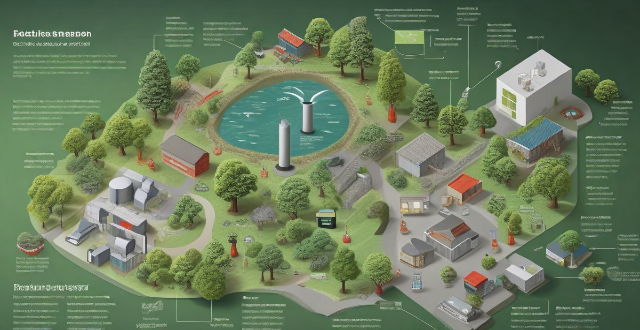
What are the most effective strategies for reducing greenhouse gas emissions on a global scale ?
The article discusses effective strategies for reducing global greenhouse gas emissions. These include transitioning to renewable energy sources, enhancing energy efficiency, promoting sustainable land use practices, developing carbon capture and storage technologies, adopting international agreements and policies, raising awareness and education, incentivizing green technology innovation, and improving waste management. By implementing these strategies on a global scale, nations can work together to mitigate the effects of climate change and create a more sustainable future for all.

How does deforestation contribute to global warming ?
Deforestation contributes to global warming by releasing greenhouse gases, destroying natural habitats and ecosystems that regulate climate, increasing the risk of wildfires, and affecting water resources. Governments and individuals must take action to reduce deforestation and promote sustainable forest management practices.

How do fossil fuels contribute to global warming ?
Fossil fuels contribute to global warming by releasing greenhouse gases like carbon dioxide during combustion, trapping heat in the Earth's atmosphere and causing the planet's average temperature to rise. This process leads to climate change impacts such as rising sea levels, extreme weather events, and loss of biodiversity. The production and consumption of energy derived from fossil fuels play a significant role in these emissions. To mitigate the effects of global warming, transitioning towards renewable energy sources like solar power, wind energy, and hydroelectric power is essential.
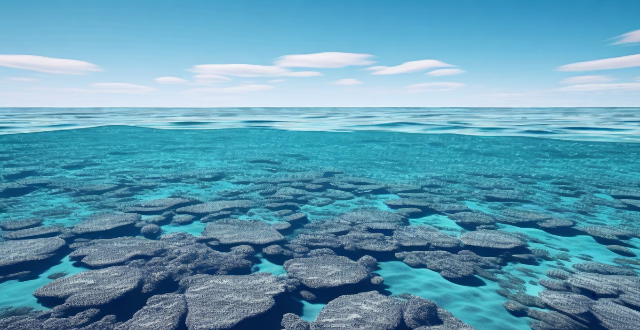
What are the impacts of global warming on marine life and fish populations ?
The provided text discusses the impacts of global warming on marine life, particularly fish populations. It outlines how rising ocean temperatures alter habitats and affect metabolic rates; how ocean acidification disrupts calcification processes; how changes in currents and water circulation alter migration patterns and species ranges; the loss of coral reefs and its implications; the effects of extreme weather events on marine environments; and the challenges these changes present for resource management. The conclusion emphasizes the need for collective efforts to mitigate the effects of global warming on oceans.
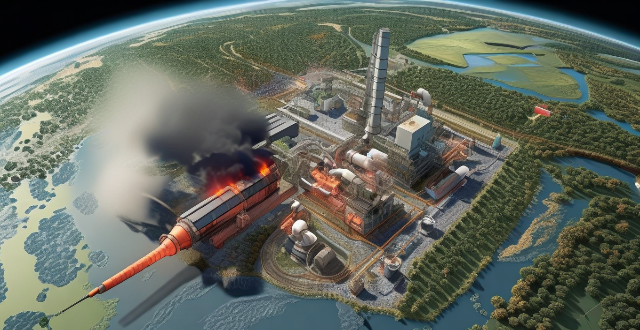
How do greenhouse gas emissions contribute to global warming ?
Greenhouse gas emissions, primarily carbon dioxide (Greenhouse gas emissions, primarily carbon dioxide (e (CH4), nitrous oxide (N2O), and fluorinated gases, play a crucial role in the phenomenon of global warming. These gases trap heat within the Earth's atmosphere, leading to an increase in the planet's average temperature. The greenhouse effect is a natural process where certain gases in the Earth's atmosphere trap energy from the Sun. However, excessive amounts of greenhouse gases due to human activities are causing this natural process to become unbalanced, resulting in global warming. The primary sources of these emissions include fossil fuel burning, deforestation, industrial processes, agriculture, and waste management. The increase in greenhouse gas concentrations leads to more heat being trapped within the Earth's atmosphere, causing a range of environmental impacts including melting ice caps and glaciers, extreme weather events, ocean acidification, and habitat loss. To combat the effects of greenhouse gas emissions and global warming, various strategies are being implemented, including renewable energy, energy efficiency, carbon capture and storage, reforestation, and sustainable agriculture.

Is carbon offsetting effective in reducing greenhouse gas emissions ?
Carbon offsetting is a strategy to compensate for CO2 emissions by investing in projects that reduce, avoid, or absorb an equivalent amount of CO2 elsewhere. While it can provide immediate action and support clean projects, there's a lack of standardization and potential for perverse incentives. Effectiveness depends on project quality and organizational integrity. It should be part of a broader strategy, not seen as a silver bullet.

What role do deforestation and forest fires play in global warming ?
Deforestation and forest fires significantly contribute to global warming by increasing greenhouse gas concentrations, altering Earth's reflectivity, and disrupting natural carbon cycles and ecosystem services.

What are the benefits of carbon sequestration in reducing global warming ?
Carbon sequestration helps to reduce greenhouse gas emissions and stabilize climate conditions, leading to improved air quality and public health. It also promotes sustainable development by supporting renewable energy sources and creating green infrastructure. Additionally, carbon sequestration creates job opportunities and stimulates innovation in various industries. In the long term, it preserves biodiversity and prevents extreme weather events caused by climate change.
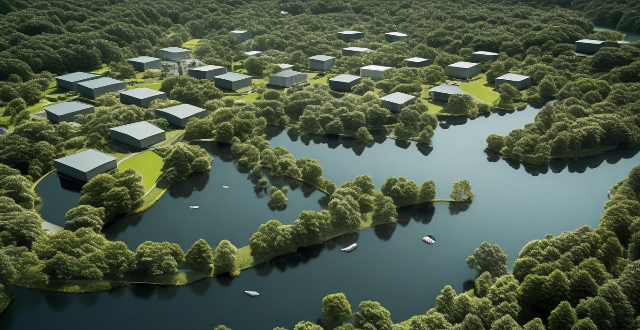
How effective is geoengineering in combating climate change ?
Geoengineering, the large-scale manipulation of the environment to combat climate change, has potential benefits and risks. It includes methods like Solar Radiation Management (SRM) and Carbon Dioxide Removal (CDR), which could theoretically offset global warming and lower atmospheric CO2 levels, respectively. However, geoengineering is not a solution to the root cause of climate change, carries uncertain side effects, and raises equity and ethical concerns. Its effectiveness is also yet to be proven at a relevant scale. Therefore, while research into geoengineering should continue with caution, it should not replace the urgent need for global greenhouse gas emission reduction and adaptation strategies.
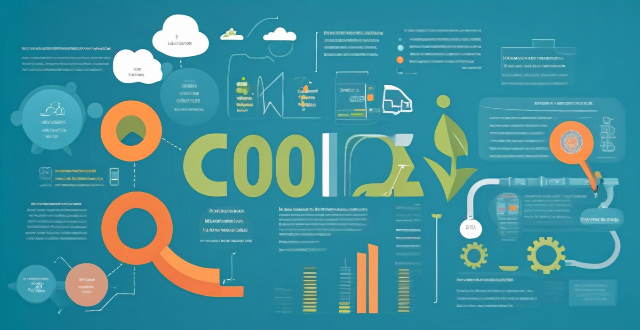
How can international cooperation on climate change contribute to global security ?
International cooperation on climate change is vital for global security. It helps mitigate environmental disasters, promotes economic stability and growth, enhances social cohesion and peace, facilitates technology and knowledge sharing, and strengthens global governance and diplomacy. Through joint efforts, nations can address one of the most pressing challenges of our time and secure a safer future for all.

What is geoengineering and how does it work ?
Geoengineering refers to the deliberate and large-scale intervention in the Earth's climate system to counteract or reduce the effects of global warming. It is a set of methods and technologies that aim to reduce global temperatures by altering the environment, rather than reducing greenhouse gas emissions. There are two main types of geoengineering: Solar Radiation Management (SRM) and Carbon Dioxide Removal (CDR). SRM involves reflecting sunlight back into space before it can warm the surface of the Earth, while CDR involves removing carbon dioxide from the atmosphere either by natural or artificial means. The effectiveness of geoengineering depends on the type being used. For SRM, the goal is to cool the planet by increasing the albedo effect, while for CDR, the goal is to reduce the amount of CO2 in the atmosphere. However, geoengineering also poses significant risks and challenges, including unintended consequences such as changes in precipitation patterns and damage to ecosystems. Additionally, there is a risk that relying on geoengineering could reduce motivation to reduce greenhouse gas emissions. Therefore, it should be seen as a complementary strategy to mitigation and adaptation efforts.

What are some of the most effective methods for carbon sequestration ?
Carbon sequestration refers to the process of capturing and storing carbon dioxide (CO2) from the atmosphere to mitigate its effects on climate change. There are several effective methods for carbon sequestration, including afforestation and reforestation, soil carbon sequestration, biochar production, ocean fertilization, and direct air capture (DAC). Afforestation and reforestation involve planting new trees or replacing existing ones in deforested areas, while soil carbon sequestration involves increasing the amount of organic matter in soil by adding compost, manure, or other organic materials. Biochar production involves creating a type of charcoal made from plant materials that is added to soil to improve its fertility and water-holding capacity. Ocean fertilization involves adding iron or other nutrients to the ocean to stimulate the growth of phytoplankton, which absorb CO2 through photosynthesis. Direct air capture involves using machines to capture CO2 directly from the atmosphere and then store it underground or in other long-term storage solutions.